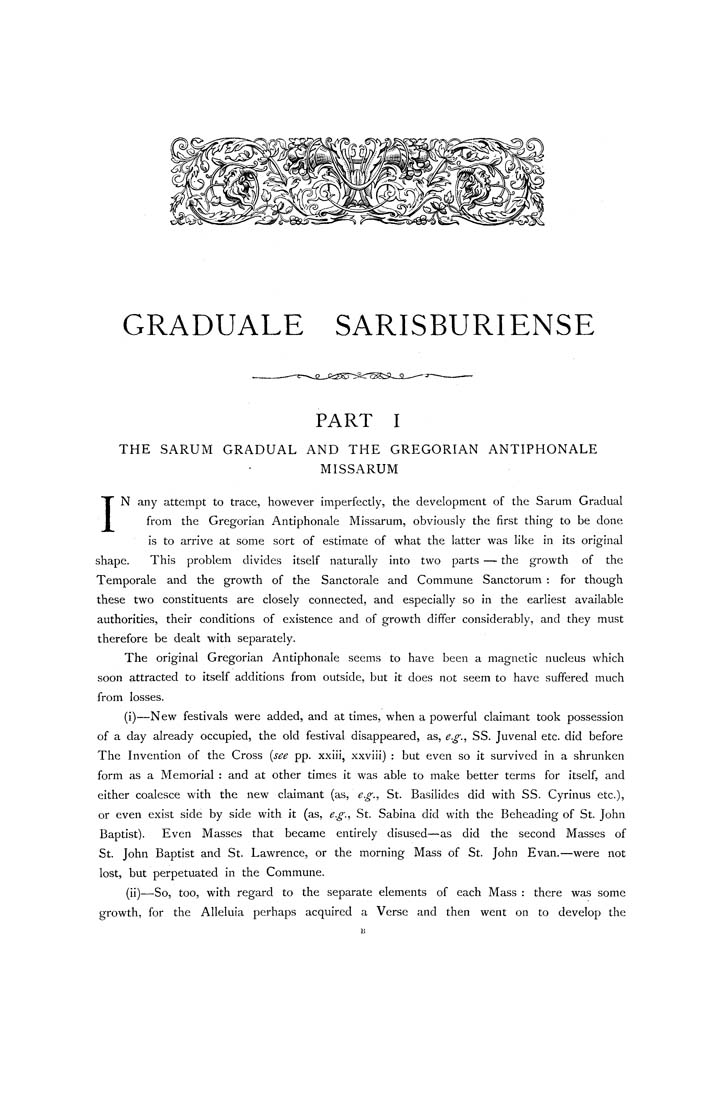GRADUALE SARISBURIENSE
PART I
THE SARUM GRADUAL AND THE GREGORIAN ANTIPHONALE
MISSARUM
IN any attempt to trace, however imperfectly, the development of the Sarum Gradual
from the Gregorian Antiphonale Missarum, obviously the first thing to be done
is to arrive at some sort of estimate of what the latter was like in its original
shape. This problem divides itself naturally into two parts — the growth of the
Temporale and the growth of the Sanctorale and Commune Sanctorum : for though
these two constituents are closely connected, and especially so in the earliest available
authorities, their conditions of existence and of growth differ considerably, and they must
therefore be dealt with separately.
The original Gregorian Antiphonale seems to have been a magnetic nucleus which
soon attracted to itself additions from outside, but it does not seem to have suffered much
from losses.
(i)—New festivals were added, and at times, when a powerful claimant took possession
of a day already occupied, the old festival disappeared, as, e.g., SS. Juvenal etc. did before
The Invention of the Cross {see pp. xxiii, xxviii) : but even so it survived in a shrunken
form as a Memorial : and at other times it was able to make better terms for itself, and
either coalesce with the new claimant (as, e.g., St. Basilides did with SS. Cyrinus etc.),
or even exist side by side with it (as, e.g., St. Sabina did with the Beheading of St. John
Baptist). Even Masses that became entirely disused—as did the second Masses of
St. John Baptist and St. Lawrence, or the morning Mass of St. John Evan.—were not
lost, but perpetuated in the Commune.
(ii)—So, too, with regard to the separate elements of each Mass : there was some
growth, for the Alleluia perhaps acquired a Verse and then went on to develop the
|








